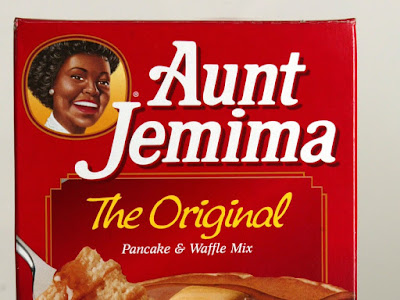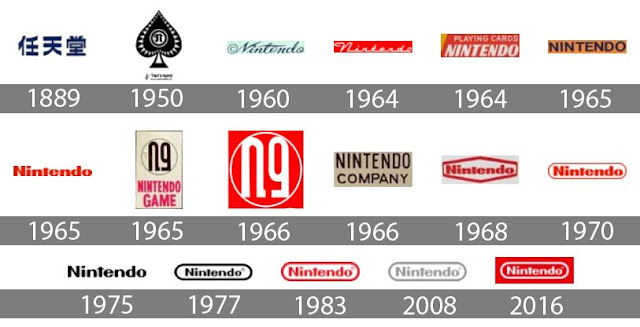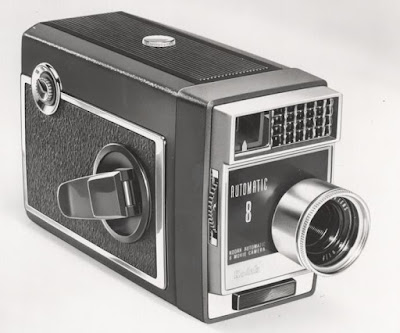The Secret to a Forever Brand
 |
Creating
a brand to reflect a business is one of the most important missions
every entrepreneur has to tackle when starting a company. Beyond a
memorable logo, good branding increases the value of a company, provides
employees with direction and motivation, and helps acquire new
customers. But be careful, this is not a one-time mission. A brand and
its branding aren’t static and can’t just be set up once and then
ignored forever after.
Many companies start off in one direction, but they don’t necessarily keep that course. They grow and adapt, they add more services, change their business model, decide that perhaps the audience they were once aiming for isn’t the one they want to target anymore. Maybe the founder decides to add a specific product or service or focus on a new market, another reason may be a shift in focus to a product that is outselling the competition.
Industries can change in the blink of an eye and customers can come to expect something new overnight. Technological innovations might have had an impact both on what you do and how you are perceived. Perhaps your brand now seems old-fashioned rather than cutting edge like it once did.
Just as your business grows and evolves, so must your brand and its image. Without it, your brand perception will no longer fit your product nor speak to your audience. This includes your logo and graphic chart, as well as your marketing strategy, products and services.
To rebrand or to evolve the brand, that is the question
Brand evolution is more of a baby-step. It’s a response to feedback, design trends, the marketplace or internal changes. It’s about working with the same foundations and pulling out pieces that are not as efficient, to fix or remodel them. For example, a few changes to your website’s texts or a slight modification to your product. It can also be the sponsorship of a new celebrity, in line with the image you already have, like Rolex has been doing for the past decades.
Brand evolution helps your business stay current without having to do a full rebrand. It helps keep your current audience and communities engaged and builds a culture around continuous improvement. Your brand will still be recognizable through the evolution, keeping the value of your brand equity. You’re not reinventing, you’re just adapting to a certain issue or trend, as well as your customers’ needs and desires.
Rebranding, on the other hand, is a revolution that requires rebuilding from the ground up. Essentially everything is up for reinvention – identity, hierarchy, communication, graphics, colors, product, industry and even the company name. A rebrand is a big shift in brand image, action plan and presentation. Usually, a rebrand comes with a marketing campaign and a big reveal of some kind to show people that the brand has changed. It typically marks the start of a new era and communicates this clearly to the audience as well.
When considering a rebrand or brand evolution, it’s important to get it right in order to keep the brand recognition and goodwill you’ve already accrued – unless a company is looking to disassociate from its past and start anew, of course. This process is about much more than using a trending hashtag in company ads – it’s about integrating a new message into the brand’s ethos.
The black lives matter movement brought to the forefront a glaring need for certain companies to update their image. The movement inspired some businesses to completely rebrand or evolve their brand values to prioritize diversity and racial justice.
 |
Among them is Quaker Oats. They announced a rebrand of Aunt Jemima, after 130 years of the same branding, in order to divert from a racist past. Indeed, their current branding is said to be based on a stereotype of a friendly black woman working as a servant for a white family. The changes are expected for the end of the year.
 |
Nintendo
For different reasons, Nintendo has also been through many rebrands. Did you know it was founded in 1889 and originally produced handmade Japanese playing cards? Nintendo's cards were high-quality hand-painted works of art that and quickly became popular. In 1902, the brand evolved and also began creating and selling western style playing cards in Japan, which caught on both locally and in the rest of the world. In 1950, Hiroshi Yamauchi, the founder Yamauchi's great grandson, took over the business and tried to rebrand by using new business tactics like manufacturing cards with Disney characters on them, shifting from an adult market to a younger audience.
Throughout the 1960s, Nintendo ventured and rebranded into various lines of business from food to love hotels and even a taxi service. Unfortunately, none of these saw success and Nintendo struggled to stay afloat, until the mid-70s when they bought the distribution rights for the world's first-ever video game device, beginning their iconic run in the industry.
Nintendo rebranded many times over to find its niche and go on to produce some of the most successful consoles in the video game industry. The brand continues to evolve in different ways to stay in the game.
Of course, it’s not always necessary to change everything. Brand evolution can be enough to grow and evolve according to customers’ moods. Making adjustments keeps brands in the competitive loop rather than falling behind and letting the competition take over.
Coca-Cola, for instance, has evolved with new slogans and advertising over the years. However, the core Coca-Cola branding has changed very little over the 134 years since it debuted in 1886.
The logos and colors are strikingly similar. Coca-Cola demonstrates that timeless brands do exist. Sometimes minor tweaks along the way are far more effective in ensuring brand longevity and appeal across generations.
 |
In most cases, brands actually do both, over different periods of their lifetime. Let’s take a look at a few case studies.
Apple
When Apple started out in 1976, their target audience was specialists and tech-geeks. As people became more computer savvy and technology became more accessible, their target audience broadened. It quickly became vital to update their brand image to reflect new user-friendly and stylish products to attract more potential customers.
By the release of the Apple II, Apple’s first success, the brand’s strengths were becoming clear. The company was not a pioneer: the Apple II was not the first microcomputer, it was just more influential than the competition. Their strength was to introduce concepts into the mainstream. And that is what they did again almost 20 years later with the product that remade Apple and put it on the path to becoming the leader it is today: the iPod. MP3 players existed already, and many were actually technically superior to the iPod, with larger hard drives, replaceable batteries and compatibility with both Windows and Mac. So, what was Apple’s edge? The iPod just looked cooler! It also came with an advertising campaign of flashy colors and dancing silhouettes with white earphones that gave the product a young and trendy vibe.
It changed the company on a fundamental level, turning it from a computer manufacturer into a consumer electronics designer. In 2007, the company completed this transformation when it changed its name from Apple Computer to Apple Inc. That same day, it also announced another epic milestone: the iPhone.
The brand has made radical changes to reposition its product. It then evolved naturally to ensure it would remain current and stand out from the competition.

Netflix
Same goes for Netflix. Before they introduced the streaming concept, Netflix first started off as a Movie and TV show rental service in 1997 – yes, it’s that old!
It was originally founded by Reed Hastings and Marc Randolph, two software engineers who wanted to develop a company that fit their skills and interests, the internet and movie rentals.
The advent of Millennials, who grew up alongside the advances in technology and were raised on data and quick access to information, ushered in a new wave of consumerism that was dictated by instantaneous communication and a desire to have everything on-demand.
Netflix responded by completely shifting their product offering. The way we consume films and TV is very different now to how it was when Netflix began. The brand has grown and evolved with technology in order to deliver what people wanted. It also created its famous ‘ta-dum’. Debuting back in 2015, after having been created by Oscar-winning sound designer Lon Bender, the opening sound is as recognizable at this point as the company’s bright red logo.
Constantly refining, fine tuning and keeping up with the times has ensured that the Netflix brand will be a mainstay in our lives for years to come.

Rolex
Rolex has weathered generations due to its ability to define and constantly redefine luxury, evolving its brand and product to fit with market perception. Evolutionary not revolutionary, Rolex grows with the idea that, like beauty, luxury is in the eye of the beholder.
Hans Wilsdorf and his partner Alfred Davis started off by selling watches, not making them. The company known as Wilsdorf and Davis changed its name to Rolex and started selling their own manufactured watches. This was a major rebrand that has gone from strength to strength, becoming one of the leading names in accuracy, reliability and style.
During the 1920s and 1930s when explorers were focused on discovering every corner of our planet, Rolex focused on the durability of its watches. In 1927, a Rolex watch survived a 10-hour swim across the English Channel, worn by Mercedes Gleitze, the first woman to endeavor the feat. The Rolex Oyster was hailed as the first waterproof watch, a technical achievement envisioned by its visionary founder Wilsdorf. He announced the achievement on the front page of the Daily Mail, a new communication tool at the time that is today known as a traditional win-ad. This challenge marked the beginning of an era for Rolex – wherever there was an adventurer challenging what was previously considered impossible, there would be a Rolex on their wrist. While this type of partnership continues to this day, during the 1940 and 50s, Rolex again adapted its branding toward wealthy clients. In 1945, the company started making the Datejust in gold, which became the iconic retirement gift.
 |
It was more than simple design changes that made Rolex the luxury watch. The branding was a conscious PR effort, pioneering relationships with airline pilots, scientists, actors, athletes and yacht club presidents and making sure that the Rolex watch was always on the right wrist. Rolex was also one of the first companies to begin sponsoring sporting events and athletes across high-brow disciplines like tennis, equestrianism and golf, and branched out even further to include the classical arts.
In the 21st century, Rolex focused on technological advances to avoid being deemed obsolete. A Rolex watch is now scratch proof, shock resistant, impervious to water pressure, offers a dual time zone function, and comes equipped with a full annual calendar. Rolex is one of the only manufactures to produce its own components and alloys, such as their Everose gold. The brand has also evolved its connection with exploration to one of sustainability, supporting the pioneers that are working to preserve our planet.
Rolex doesn’t sell watches, it sells accuracy, durability, adventure, contribution, success, power, privilege and a sense of belonging. Rolex has always been at the forefront of luxury, evolving over time to remain relevant to its community and image.
The risk of staying of the same
We live in a constantly evolving world. Everything happens so fast! After buying a new iPhone, Apple is already leaking pictures of the next one. It’s hard to follow and keep up. But customers are always asking for more, for harder, better, faster, stronger. More than just a great Daft Punk song, it’s also the truth. If your product doesn’t answer all the latest criteria, customers will go somewhere else, in the blink of an eye.
 |
Refusal to evolve was the direct cause of Kodak’s failure. For decades, you couldn’t walk through New York’s Grand Central Station without admiring the huge photographs of “Kodak moments”. Kodak was part of all of our lives, it was the reference in the film business but was also present at every family gathering.
Unfortunately, successful companies can become blind-sided and product-oriented, instead of focusing on their consumers’ needs. Kodak’s failure actually has its roots in its success, which made it resistant to change. Its narrow corporate culture underestimated the threat of digital. Ironically, Kodak invented the first digital camera in 1975, but instead of marketing the new technology, the company held back for fear of hurting its lucrative film business. Sony and Canon, the hungry competitors, saw an opening and moved forward with their digital cameras, dominating the market share.
Kodak didn’t ask the right question. It focused on how to sell more of the same instead of asking what the industry needed next.
Companies have to adapt to the requirements of the market, even if that means competing with themselves. Smart branding is about providing customer value satisfaction, it is about keeping the company relevant to customers’ needs and evolving with the trends.
A brand may be the best today, but it might not be tomorrow. It’s vital to reassess regularly to stay in the game. The right branding and marketing agency can help refresh brand perception, boost business and bring in a whole new audience. The product you launch on Monday may be a commodity by Wednesday – therefore it’s important to bet on your brand, not on your product, if you want to live forever.
Branding and marketing is essential for businesses. Building brand awareness is a long-term process, thank you for sharing these ideas. As a design and branding company, I am glad to come across this. Keep sharing your valuable knowledge and experience. Branding and advertising agency in Pune India
ReplyDeleteI always prefer to read the quality content and this thing I found in your post. I am really thankful to you for this post. Visit also online brand promotion in India .
ReplyDeletei read your blog it is fantastic i can provide more knowledge further this you can<a href ="graphicosmos.in> Visit my site <a/>
ReplyDeleteNice Post
ReplyDeletenice
ReplyDeleteThis comment has been removed by the author.
ReplyDeleteYou writing is always fabulous. This is third time I’ve read your blog and I find the information very useful.
ReplyDeleteDigital Branding Agency in Mumbai
cool
ReplyDeleteI loved your blog post about how to create a brand to reflect a business. It was really inspiring and I think it would be great for entrepreneurs that want to create a brand that lasts forever. I also really appreciated your comment about how many companies change their course and what it takes to change with them. This insight is really eye opening as well. How to Choose the Right CRM
ReplyDeleteTook me time to read all the comments, but I really enjoyed the article. It proved to be Very helpful to me. Inventory Management Software
ReplyDelete